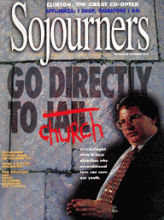Because the Hebrew Scriptures are rooted in a landed community that had to deal with the everyday issues of food and money, they describe in considerable detail what might be called a path of "holy economics." At one level, there is the transformational vision of Leviticus 25 and Deuteronomy 15: Every seventh year, debtors were released from their debts and the land itself was released from human control, so that it could make its own Sabbath rest for an entire year.
And in the 50th year (seven times seven plus one), a Jubilee was to be proclaimed: The land should lie restful for yet another year, while every family returned to the equal share of the land it had been assigned when the people of Israel first came into the Promised Land. Thus the rich were to be released from the extra land they had acquired, the poor were to be released from their landless status, even indentured servants, no matter where they stood in their own seven-year term of service or a life-long obligation, were to be released to return to their original family landholding. (This "release"—in Hebrew, dror—is what is encoded on the Liberty Bell: "Proclaim liberty [dror] throughout the land to all the inhabitants thereof.")
But what about the time between transformations, between sabbatical years and Jubilees? As we lead our "ordinary" lives today, we certainly need to look at the Bible's notion of ordinary economic history as well as the times of transformation.
At first glance, it seems like six years of free enterprise. For six years at a stretch, the land could be worked and the land could be bought. Some could get poor enough to need to borrow money, some could get rich enough to lend it. For 49 years at a time, some could get rich enough to hold a great deal of land and to supervise a large number of indentured workers.
Read the Full Article

